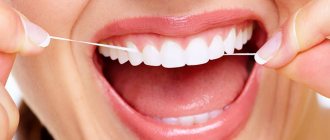Diagnostics
Traffic jams in themselves are not a disease, but only its consequence.
It is necessary to determine the causes and treatment of the disease that provoked the formation of a plug in the tonsils. You can independently detect a blockage in the tonsils by examining your own throat and comparing it with photographs showing what the blockages look like.
An otolaryngologist only needs to look at the patient's throat to make a diagnosis.
The doctor will also interview the patient, paying attention to symptoms. Additionally, an ultrasound and a throat smear may be required to determine the nature of stones in the lacunae
The problem of congestion in the tonsils in children is solved by a pediatrician - a pediatrician or a pediatric otolaryngologist. After an examination, the doctor prescribes treatment that will help both get rid of the tonsil blockage and prevent their reoccurrence.
For an experienced doctor, identifying tonsillitis is not particularly difficult. The disease is accompanied by redness and swelling of the tonsils, the presence of plugs with an unpleasant odor in their lacunae, and enlarged lymph nodes located on the neck near the ears.
But, since the causative agent of pathology can be a variety of microorganisms, it is important to determine which one among them caused the disease. After identifying the pathogen, it becomes clear to the doctor which medicine is best to use to combat a particular microorganism
Therefore, if tonsillitis appears, you should definitely consult a doctor and undergo all the necessary tests. A blood test will indicate the presence of the disease by the following indicators:
- Increased level of leukocytes (up to 20*109/l or more).
- Increase in ESR (up to 40-50 mm/hour).
- A large number of immature leukocytes.
How to treat caseous plugs
What you absolutely should not do is try to remove the plugs yourself. “Picking” your tonsils with your finger or foreign hard objects will not only not relieve you of the disease, but will also aggravate it. The deposits will clog even deeper, and the infection will only grow.
Rinsing in this case is also not an option. Although patients note some relief, the medicinal solution only washes the surface of the tonsils, but, unfortunately, does not “wash out” the plugs.
Therefore, with this problem you should contact an ENT doctor, therapist or dentist. At some stages, treatment of the disease is not required, but if necessary, a specialist will perform professional cleansing of the tonsils. This procedure can be carried out in two ways:
- manually - the doctor rinses the recesses in the tonsils with a syringe with a special solution;
- using devices - vacuum suction, ultrasound, etc. are used.
As a rule, the treatment of caseous plugs is approached in a comprehensive manner, adding medications and physiotherapeutic procedures to cleansing the tonsils.
Patients who notice white deposits on their tonsils, bad breath, or a sore throat should definitely consult a doctor. After all, in the early stages it is much easier to eliminate the disease.
How can you gargle to remove bad breath? Folk and medical remedies
Gargling helps relieve bad breath from the throat. You can use special medicinal solutions, for example, furatsilin or rotokan. It is recommended to rinse not only the mouth cavity with such solutions, but also the throat itself several times a day. Furacilin or rotokan must be used daily for a week.
The drug Miramistin is another effective remedy that eliminates inflammatory processes and a specific odor. Typically, this solution is prescribed for sore throats: it has a powerful antibacterial effect. It can be used in the form of a spray, as well as in the form of rinses.
Folk remedies can also help get rid of unpleasant odors. So, you can regularly treat the oral cavity with chamomile decoction, which will not only eliminate the odor, but also relieve the inflammatory process.
A decoction of sage has a similar effect. To enhance the effect, it is recommended to add a few drops of tea tree essential oil to the herbal decoction, which will also perfectly disinfect the oral cavity.
Please note that with this phenomenon, you can not only gargle, but also wash out purulent plugs (if any) from the syringe, and you can use regular saline solution or miramistin
How can a doctor help?
Treatment of tonsillitis must be carried out comprehensively. Before prescribing medications, the ENT doctor will remove plugs from the tonsils using a blunt spatula or a special irrigator. This device is intended for washing the affected lacunae with a stream of medicinal solution.
After this, the patient may be prescribed the following treatment:
- Physiotherapy, phonophoresis.
- Rinse with medicinal solutions.
- Antifungal or antibacterial drugs.
If conservative therapy methods do not help, and the inflammation begins to spread to surrounding tissues, the patient is prescribed an emergency surgical operation called tonsillectomy. The tonsil removal procedure is performed under local or general anesthesia.
After the operation, the patient is prescribed a special diet that excludes foods that irritate the operated tissues and slow down their healing process. Also in the postoperative period you should avoid alcohol, taking hot baths and playing sports.
How to prevent odor?
Regular preventive measures will help prevent or remove bad breath:
Everyday hygiene procedures in the morning and evening - brushing your teeth for at least 4-5 minutes, cleaning your tongue with a special scraper, using rinses, using an irrigator, floss or brush. A toothpaste with a therapeutic effect and a brush with a hardness that matches the sensitivity of your teeth. After each meal (even light snacks), floss, rinse your mouth, and after hard foods, brush your teeth additionally. Compliance with the drinking regime - drink at least 2.5 liters of liquid (filtered water, still mineral water). Balance your diet - a minimum of fatty, spicy, salty foods, a maximum of healthy, vitamin-rich foods. Give up bad habits - smoking, drinking alcohol. Make it a rule to get examined by a dentist once every six months. At the first sign of a stale aroma, pay attention, after which it appears. If the smell does not go away, go to the doctor for a consultation so as not to miss a serious pathology. In the presence of chronic diseases, it is necessary to carry out a course of medical therapy under the supervision of the attending physician, so as not to bring the body to a critical state. The problem of bad breath haunts almost the entire population of the world
It is often quite simple to deal with it by brushing your teeth with a refreshing paste on your toothbrush. However, in some situations, if the smell thins out the aroma of rot, this is quite difficult to do. This disease is called halitosis, and by its nature it causes its owner not pain, but psychological problems, sometimes leading to depression.
The problem of bad breath plagues almost the entire population of the world. It is often quite simple to deal with it by brushing your teeth with a refreshing paste on your toothbrush. However, in some situations, if the smell thins out the aroma of rot, this is quite difficult to do. This disease is called halitosis, and by its nature it causes its owner not pain, but psychological problems, sometimes leading to depression.
That is why the putrid smell should be gotten rid of immediately in order to lead a normal personal life and good communication. To do this, the first thing you should do is find out the root cause of such an unpleasant odor and the possibility of curing it.
The root of the problem is microorganisms
Why is bad breath so persistent and appears again and again? To deal with the problem, you need to understand the mechanism of its occurrence as a whole. As you know, the mouth is a “home” for many bacteria, microorganisms, and fungi. Naturally, like all living organisms, they feed and excrete waste products. The more plaque there is on the teeth, the more comfortable the bacteria feel, because their preferred environment is oxygen-free, and just such conditions are created under the layer of plaque. Microorganisms produce sulfur compounds, which have a pungent odor and feel repulsive. It is noteworthy that even if a person brushes his teeth thoroughly, in some cases (for example, progressive periodontal disease), deep periodontal pockets cannot be cleaned out on their own, and they become a source of foul odor. The same applies to plugs with purulent tonsillitis, when white lumps of pus accumulate in the lacunae of the tonsils.
Professional methods: removing plugs and rinsing lacunae
Having figured out how to get rid of the smell of unhealthy tonsils on your own, you should consider the methods offered by otolaryngologists.
First of all, in case of chronic tonsillitis, lavage of lacunae is indicated. This procedure is carried out using a special syringe with a curved tip, or a vacuum device for cleaning the tonsils. The essence of the procedure is to irrigate the cavities in the tonsils with an antiseptic solution. Most often, doctors use a solution of furatsilin.
Note! Rinsing the lacunae will not only help remove the odor from the tonsils, but also get rid of chronic tonsillitis. Plugs in gaps must be removed. They are an accumulation of waste products of pathogenic bacteria and cause a putrid odor from the oral cavity
To remove plugs, doctors use the same syringe with a curved tip, as it is convenient for them to break up the solid contents of the lacunae. A more gentle method is vacuum cleaning. A vacuum nozzle is applied to the lacuna, which literally pulls out the plugs. Then the depressions are irrigated with an antiseptic solution, and at the end the doctor lubricates the tonsils with Lugol
They are an accumulation of waste products of pathogenic bacteria and cause a putrid odor from the oral cavity. To remove plugs, doctors use the same syringe with a curved tip, as it is convenient for them to break up the solid contents of the lacunae. A more gentle method is vacuum cleaning. A vacuum nozzle is applied to the lacuna, which literally pulls out the plugs. Then the depressions are irrigated with an antiseptic solution, and at the end the doctor lubricates the tonsils with Lugol
Plugs in gaps must be removed. They are an accumulation of waste products of pathogenic bacteria and cause a putrid odor from the oral cavity. To remove plugs, doctors use the same syringe with a curved tip, as it is convenient for them to break up the solid contents of the lacunae. A more gentle method is vacuum cleaning. A vacuum nozzle is applied to the lacuna, which literally pulls out the plugs. Then the depressions are irrigated with an antiseptic solution, and at the end the doctor lubricates the tonsils with Lugol.
Washing lacunae at home
A syringe with a curved tip can be easily purchased at any pharmacy, so rinsing the lacunae can be done at home. True, at home it is forbidden to insert the tip into the lacuna itself, otherwise there is a risk of injury to it, which will only aggravate the problem.
It is necessary to draw a solution of furatsilin into the syringe, place the tip opposite the recesses, and irrigate the lacunae with the solution, spitting it as it flows into the mouth.
At home, you can also use an irrigator with a special attachment. The sequence of action is the same: the device is filled with an antiseptic solution, the tip is brought as close as possible to the recesses of the tonsils, and then irrigated with the medicine.
At the end of the procedure, the tonsils should also be lubricated with Lugol - this will help prolong the effect of rinsing and prevent the re-formation of plaque.
Causes of halitosis in children
Young children also suffer from bad breath. The medical term for this symptom is halitosis. Children often forget to take care of their oral hygiene.
Therefore, parents are obliged to supervise timely bathing procedures and explain to the child the importance of hygiene. But there are times when the symptom is not related to hygiene
For example, tonsillitis and bad breath are very often interrelated. Other diseases of the ENT organs that provoke the appearance of an unpleasant odor:
- pharyngitis;
- rhinitis;
- sinusitis;
- adenoiditis.
Another cause of the symptom is diseases of the teeth and gums:
- caries;
- stomatitis;
- gingivitis;
- periodontitis.
Diseases of the internal organs also cause odor:
- gastritis;
- ulcer;
- kidney and liver diseases.
The problem is also provoked by diabetes mellitus and increased acetone in the blood. But, according to doctors, it is mainly chronic tonsillitis that causes bad breath. There is no need to sound the alarm when halitosis appears only in the morning or is felt during very close contact. This is the norm. Halitosis can also be short-lived. This is due to eating garlic, onions, and sweets. Imbalance of oral microflora is caused by the following factors:
- fungal infection in the oral cavity;
- malfunction of the salivary glands;
- increased acidity;
- mental health disorder - rumination.
There are cases when halitosis appears in newborns. Why does it occur:
- Dysbacteriosis. Appears when feeding infants with infant formula or during treatment with antibiotics.
- Poor oral hygiene during teething.
If a patient has a sore throat and bad breath, one may suspect that the cause is a sore throat or tonsil blockages. How to get rid of this problem? Quite often there are cases when plugs are removed from a patient’s throat with a finger or with a cotton swab at home. This method is dangerous and will only worsen the situation. Moreover, traffic jams are a consequence of a disease that requires medical intervention.
Bad breath: causes
Where do halitosis legs grow from? There are many factors here:
- Caries and its complications (pulpitis, periodontitis, periostitis and other inflammatory dental diseases).
- Periodontitis and periodontal disease. Periodontal pockets accumulate plaque and microorganisms, as well as decaying food debris.
- Inflammatory diseases of the oral mucosa
- Pathologies of the ENT organs (sinusitis, laryngitis, tracheitis), as well as rhinitis
- Dry mouth. Insufficient saliva production leads to disruption of the self-cleaning process, which creates excellent conditions for the proliferation of bacteria (remember what your breath smells like in the morning, because there is little saliva at night). Their waste products create an unpleasant odor. A similar situation occurs with nasal congestion and forced breathing through the mouth when the mucous membrane dries out.
- Diseases of internal organs (especially the gastrointestinal tract).
- Parasitic infestation
- Poor oral hygiene
- Improper care of dental structures (braces, dentures).
A consultation with a dentist and, if necessary, doctors of other specialties will help you find out the true cause of the unpleasant odor. You may need to undergo additional examination (for example, FEGDS if gastritis or a stomach ulcer is suspected, or scraping for inflammatory diseases of the mucous membrane).
Elimination methods
The smell can appear for two reasons:
- Inflammation of the tonsils as a result of a cold - tonsillitis.
- After partial removal of the tonsils, this condition is short-lived and disappears after 1 week.
Methods for eliminating unpleasant odors include:
- rinsing the nasopharyngeal cavity with disinfectant solutions (for example, saline solution or weak herbal decoctions);
- daily oral hygiene procedures: brushing teeth, using dental floss and mouthwash;
- remove inflamed tonsils surgically.
It will not be possible to mask the “stench” with aromatic preparations.
Medical therapy
Treatment therapy includes:
- mouth rinse;
- the use of aseptic solutions for rinsing the nasopharynx;
- remove or treat teeth damaged by caries;
- get rid of completely damaged teeth;
- attend physical therapy;
- use homeopathic therapy.
Mechanical impact
Mechanical action refers to the physical removal of formed plugs. This procedure takes place, but you should not carry it out yourself, removing plugs from the mucous membrane. This method increases the risk of re-infection of existing open wounds.
The lacuna can be cleaned of purulent contents only by an otolaryngologist, where all sanitary and preventive measures will be observed.
If it is impossible to use a conservative method of odor elimination or if there is no effect, the issue of complete or partial removal of the tonsils is decided.
Rinsing
A common and inexpensive way to get rid of unpleasant odor is to use mouth rinse solutions.
- Saline solution. Stir half a teaspoon of table salt in a glass of warm water. Use up to 6 times a day. This solution helps eliminate persistent odor and also provide an aseptic effect on the entire oral cavity.
- Medicinal plants - decoctions from them. Most medicinal plants have a bacteriostatic, disinfectant effect. To prepare a decoction for the unpleasant odor and the periodic appearance of hard accumulations on the tonsils, you will need chamomile, linden and St. John's wort inflorescences (1 tablespoon of each plant). They should be boiled using approximately 1 glass of water. Rinse your mouth with the decoction and irrigate the nasal cavity every 3 hours.
Cryotherapy
A new trend in medicine that allows you to eliminate unpleasant oral odor caused by chronic or acute tonsillitis.
Cryotherapy is a therapy using a cryostat - a device with an extremely low temperature that “freezes” the tonsils or part of them. The effectiveness of cryotherapy has fully met the expectations of people who are tormented by the smell of bad breath. 3 sessions are enough to completely get rid of the disease.
Prevention
Timely prevention will reduce the risk of developing tonsillitis. To do this, you must adhere to some rules:
- Lead a healthy lifestyle, giving up smoking, drinking alcohol, and giving preference to sports.
- Rinse your mouth after every meal.
- Visit the dentist's office at least 2 times a year, and more often if necessary.
- Observe oral hygiene rules.
- Use zinc-based mouthwash and sodium chloride.
- Strengthen immunity:
- Drink at least one and a half liters of still water per day.
- Maintain a sleep-wake schedule.
- Watch your diet, be sure to eat fruits, vegetables and meat products.
How to remove and get rid of the smell of tonsillitis from the mouth?
Methods for getting rid of bad breath caused by the presence of chronic tonsillitis are quite real. To do this, the patient can resort to the use of conservative treatment methods in the form of taking tablets or injectable antibiotics, or regularly gargle with antiseptic solutions. The most popular and effective are the following methods for eliminating putrid odor from the mouth.
Saline solution
Everyone knows that salt is a natural preservative that can destroy all bacterial microflora in a matter of minutes. Salt destroys protein compounds and thereby destroys all available foci of infectious inflammation. To achieve such a therapeutic effect, the patient only needs to prepare a saline solution based on the proportion that 1 teaspoon of salt should be added to 1 glass of warm water. After this, a banal gargling is performed for 5-10 minutes. The saline solution reduces the number of bacteria, relieves infectious inflammation and, as a result, the putrid odor goes away. The method is very simple and easy to use at home.
Decoctions of medicinal herbs
It is also an equally effective method of combating the manifestation of such a symptom of tonsillitis as bad breath. The patient needs to boil 15 grams of chamomile, coltsfoot, plantain or St. John's wort in 1 liter of water. The boiling process continues for 15-20 minutes. After this, the broth should cool down and you can begin to get rid of the smell of rot from the oral cavity. A decoction of medicinal herbs has a specific smell and bitter taste, but this is the only drawback of this remedy for bad breath.
Washing lacunae
There are special drugs with an antibacterial spectrum of action that are administered directly into the lacunae. The procedure is performed in the office of an otolaryngologist and is aimed at washing out purulent plugs from the tonsils in order to neutralize the source of infection and, accordingly, the putrid odor from the oral cavity.
The type of medication is selected individually based on the results of a bacterial study of the microflora that parasitizes on the surface and in the tissues of the tonsils.
Lugol smudging
To eliminate bad breath caused by the presence of chronic tonsillitis in the tonsils, it is necessary to lubricate the tonsils with Lugol's solution in the morning and evening. To do this, you need to moisten a cotton swab with this drug and carefully wipe off the bacterial plaque that has accumulated on the surface of the tonsils. By using this procedure, it will be possible to simultaneously remove putrid odor from the mouth and suppress the activity of bacterial microflora.
Rinse with Furacilin
This is another simple and effective method of eliminating bad breath, the appearance of which is caused by the patient having chronic tonsillitis. The patient needs to take 1 tablet of Furacilin, crush it until it turns into powder. Then the crushed tablet is dissolved in a glass of warm water. Gargling is performed in the morning and evening for 5-7 days. This is the optimal length of time during which you can quickly remove bad breath, as well as stabilize the microflora in the oral cavity. It is not recommended to gargle with Furacilin solution for longer due to the fact that bacteria may become addicted to this type of antibiotic.
Chlorine dioxide rinse
This method of getting rid of putrid odor is that a patient with chronic tonsillitis uses a medical solution of chlorine dioxide to antiseptically rinse the diseased tonsils. As soon as there is a suspicion that an unpleasant odor begins to emanate from the mouth, you should rinse your throat and the oral cavity directly for 1-2 minutes. Your breath will immediately become fresh, and the positive results will last for several hours.
Sodium chloride solution with zinc
A medical solution for gargling a sore throat, which is sold in almost every pharmacy. Intended for systematic use when a person has bad breath caused by a disease such as chronic tonsillitis. You can also use this drug if necessary, if suddenly the bacteria parasitizing in the tonsils become more active and an unpleasant odor appears from the oral cavity. Rinsing is done no more than 3 times a day.
Bad breath in a child
In children, this problem is less common than in adults, because, as a rule, the average child has not yet developed chronic diseases of the gastrointestinal tract, and not all teeth have erupted. But what to do if you notice your child has bad breath? The reasons here are the same as in adults: in this way the body signals problems in the body. This means that there is a failure somewhere and a full examination needs to be carried out. In children of preschool and school age, adenoids may be a predisposing factor. The scheme is simple: adenoid growths block the path of air / breathing from the nose is replaced by the mouth / the mucous membrane dries out / saliva becomes scarce and bacteria multiply, giving rise to repulsive breathing. What if it’s just a baby? Many mothers are interested in what could be the cause of the problem if the child is one year old. Bad breath at this age can already appear due to the accumulation of plaque on the teeth (the norm is 8 by the age of one), the presence of worms, and the abuse of carbohydrate foods (cookies, sweets).
Important! You should be wary if you smell acetone from your mouth. You should contact an endocrinologist to be examined for diabetes and other electrolyte disorders.
Elimination methods
In addition to physiotherapy and medications, other methods of therapy should be used. Getting rid of tonsillitis and avoiding surgery is possible only with careful daily treatment, which may include the use of Lugol, saline solutions, chlorine dioxide, Furacilin, as well as decoctions prepared from medicinal plants.
Decoctions of medicinal herbs
Plant decoctions can be used as a gargle or taken orally, as many herbs have antifungal, anti-inflammatory and antibacterial effects.
Such plants include:
- Black currant leaves.
- Pharmaceutical camomile.
- Calendula.
- Sage.
- Raspberry leaves.
- Liquorice root.
- Eucalyptus leaves.
- Celandine (use only for rinsing).
- Viburnum fruits.
- Fireweed.
- Rhizome of meadow geranium.
- Coltsfoot.
- Plantain.
When preparing teas from the listed plants, it is recommended to add honey to them, since it is very useful for tonsillitis.
Saline solution
A solution of salt and water is an effective remedy that eliminates purulent formations and cleanses lacunae from infection. To completely eliminate the unpleasant odor caused by tonsillitis, it is recommended not only to gargle with this solution, but also to rinse your nose. This will clear the nasal passages of mucus, which contains bacteria coming from the lacunae of the tonsils.
Lugol smudging
After gargling, it is useful to lubricate the tonsils with Lugol's solution. This product has an antiseptic effect and effectively fights bacterial and viral infections, intestinal bacteria and viruses, fungi, and staphylococcus.
It should be borne in mind that Lugol should not be used by people suffering from thyroid diseases, as well as for the treatment of infants. This product should only be used by nursing mothers after consulting a doctor.
Washing lacunae
You can wash the lacunae with black radish juice, furatsilin, a solution of colloidal silver, a solution of propolis and alcohol, and herbal infusions.
You can also use an infusion of golden mustache, as this plant has powerful bactericidal properties. To prepare the infusion you will need 200 g of boiling water and a large leaf of the plant. The golden mustache is infused in a thermos for 2 hours, after which it is used for its intended purpose. Washing lacunae with this product should be carried out for 10-12 days.
Rinse with Furacilin
Furacilin has a pronounced antiseptic, wound-healing and antimicrobial effect. The drug very effectively eliminates the symptoms of tonsillitis of any type - catarrhal, follicular, ulcerative film or lacunar.
Furacilin solution should be used 2-3 times a day. After rinsing, do not eat or drink for an hour.
Sodium chloride solution with zinc
A solution of sodium chloride and zinc has a good effect in the treatment of tonsillitis. Sodium chloride is a common salt that has an antiseptic, healing and antiviral effect, eliminates swelling and inflammation. Zinc effectively fights purulent wounds, accelerates their healing process, and eliminates bad breath.
Chlorine dioxide rinse
The use of rinses containing chlorine dioxide helps eliminate unpleasant odors and sulfur deposits from the mucous membranes and tonsils. This effect is due to the ability of chlorine dioxide to effectively destroy bacteria that cause an unpleasant odor.
Prevention is everything!
If you think that you have overcome bad breath, the treatment is over and you can relax - you are mistaken. It can come back very quickly, so listen to simple recommendations.
Helpful tips for fresh breath:
- Drink more water.
Sufficient intake of water into the body ensures a high dissolving ability of saliva and washing away germs. - Consume more solid fruits and vegetables.
Fruits and vegetables serve as a kind of “grater” for plaque, removing it from the surface of the teeth. Less plaque - less odor! - Stimulate salivation.
This can be achieved by chewing something. Not necessarily chewing gum. Saliva production increases when chewing certain seeds and fruits with essential oils, such as cloves, parsley, mint.
In conclusion, we would like to remind you that in ancient times, based on the smell from the mouth, people could form an idea about a person, including their character traits. Subconsciously, this happens even today. There is only one conclusion - it’s better to take care of your health, this is reasonable from all points of view, as you have already seen.
Categories
AllergistAnesthesiologist-resuscitatorVenereologistGastroenterologistHematologistGeneticGynecologistHomeopathDermatologistPediatric gynecologistPediatric neurologistPediatric urologistPediatric surgeonPediatric endocrinologistNutrologistImmunologistInfectious disease specialistCardiologistCosmetologistSpeech therapistElorologistMammologistMedical lawyerNarcologistNeurologistNeurosurgeon NephrologistNutriciologistOncologistOncourologistOrthopedist-traumatologistOphthalmologistPediatricianPlastic surgeonProctologistPsychiatristPsychologistPulmonologistRheumatologistRadiologistSexologist-AndrologistDentistTherapistTrichologistUrologistPharmacistPhytotherapistPhlebologistSurgeonEndocrinologist
Tonsillitis bad breath how to deal with it
An unpleasant odor is a consequence, but we must fight the cause. Therefore, if a problem occurs, you should visit a doctor who will prescribe appropriate treatment. The following methods can be used at home:
- cleaning the mouth, tongue and teeth;
- regular mouth rinsing;
- cleaning the sinuses and tonsils.
Removing tonsil plugs at home is dangerous; you need to visit a doctor who will do it professionally and without threatening your health. Gargles also help remove purulent stones from the throat and get rid of unpleasant odor. Although this takes time. You should rinse your mouth regularly - 3-6 times a day. What means are used:
- Salt and soda. Dose - half a teaspoon per glass of warm water. Water should be taken purified.
- Herbal decoctions. Many herbs have antiseptic and antibacterial effects. They can be used separately and in herbal preparations. The most effective plants: chamomile, linden, St. John's wort, celandine, plantain. Pour a glass of boiling water over a spoonful of the plant, let it brew and strain.
- Pharmacy drugs. Use: chlorine dioxide, sodium chloride solution with zinc, furatsilin. Furacilin is sold in tablet form. Before use, one tablet should be thoroughly crushed and completely dissolved in a glass of water.
Lubricating the tonsils with Lugol's solution will help get rid of the unpleasant odor. This procedure will temporarily eliminate halitosis and reduce bacterial activity. In the doctor's office, you can perform a procedure for washing the lacunae using special medications. But all these procedures are ineffective if the main source of infection is not treated. Therefore, depending on the pathogen, the doctor prescribes antibiotics, physiotherapeutic procedures and homeopathic medicines. If the disease is very advanced and drug therapy does not produce results, the only option is surgery:
- complete removal of tonsils;
- partial removal of affected areas of the tonsils;
- cryotherapy is the effect of low temperatures on the tonsils, as a result of which diseased cells die.
Unfortunately, in some cases, even surgery is useless. This happens when the infection has spread not only to the tonsils, but to other organs and tissues.
Chronic tonsillitis
Chronic tonsillitis is an inflammatory process that occurs in the palatine tonsils. The palatine tonsils, or otherwise tonsils, are an organ of our immune system. The first people encountered by viruses and bacteria that enter the mouth from the outside are the tonsils. As soon as the infection touches the surface of the tonsils, they trigger increased production of leukocytes - cells that kill pathogens. After the enemy is defeated, healthy tonsils remove them from their lacunae, and then the dead bacteria, along with the dead leukocytes, are removed from the body. This process is called the self-purification process. But if due to certain factors (hypothermia, stress, chronic diseases, etc.) the body’s defenses weaken, the palatine tonsils cannot cope with infections. Bacteria (most often streptococci) accumulate in the lacunae of the tonsils and cause an inflammatory process in them.
If you look at the inflamed tonsils in the mirror, you can see white accumulations on their surface - the so-called tonsillitis plugs. These clusters are nothing more than a compressed streptococcal infection. It's these plugs that smell bad.
To get rid of halitosis, it is necessary to undergo comprehensive treatment of chronic tonsillitis in an ENT clinic.
Treatment of a strong unpleasant odor in this case comes down to drug therapy, rinsing the palatine tonsils to remove plugs and physiotherapeutic procedures.
Related and recommended questions
What to do with chronic tonsillitis? I have chronic tonsillitis, I went to see...
Tonsillitis, pharyngitis, unpleasant odor. Tell me what to do. Constantly from the tonsils...
Mucus in the throat, sore throat, fever. I am diagnosed with chronic tonsillitis. Unpleasant…
Pus is coming out of the tonsils. Doctor a month ago I started having a severe runny nose and sore throat...
Tonsillitis? Can I have chronic tonsillitis if I don’t get tonsillitis? Or chron...
Tonsillitis was not cured by Azithromycin Irina Yurievna! I have chronic tonsillitis...
Bad breath Please tell me what to do The thing is that I have had this for a very long time...
Constant sore throat and malaise. Is this chronic tonsillitis? I am 16.5 years old...
Exacerbation of chronic tonsillitis A little over a year ago I was diagnosed with chronic...
Chronic tonsillitis, how to treat Please help, I don’t know what to do anymore, recently...
Chronic tonsillitis, filling in the maxillary sinus Irina Yurievna. I will be very grateful to you...
Chronic tonsillitis does not go away for 2 months, problems with the throat, diagnosed with chronic...
Chronic tonsillitis with severe hypertrophy photo Doctor, please tell me...
Sore throat throughout the year For about a year I have noticed that there is constant discomfort...
Chronic tonsillitis, sore throat, inflammation of the tonsils. I’ve been suffering from…
Inflammation of the tonsils or tonsillitis Doctor! A few years ago I discovered in my...
What's wrong with my throat? Some kind of trouble in the mouth and throat. What does it look like, does it need treatment?...
Sore throat or whatever God bless you. I have this problem, 2 years ago I had a sore throat...
Chronic tonsillitis and I am very suffering from such a disease as chronic tonsillitis….
Large tonsil cyst Irina Yurievna. A couple of years ago I had two small cysts...









